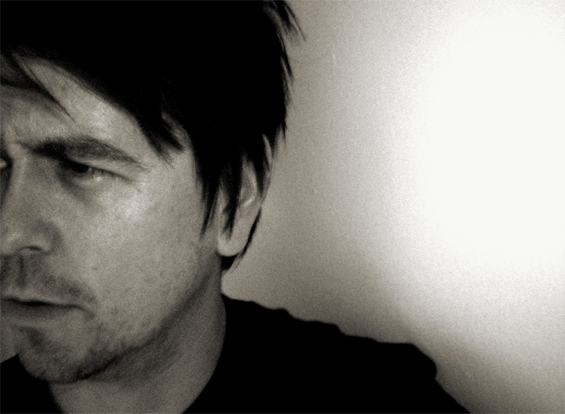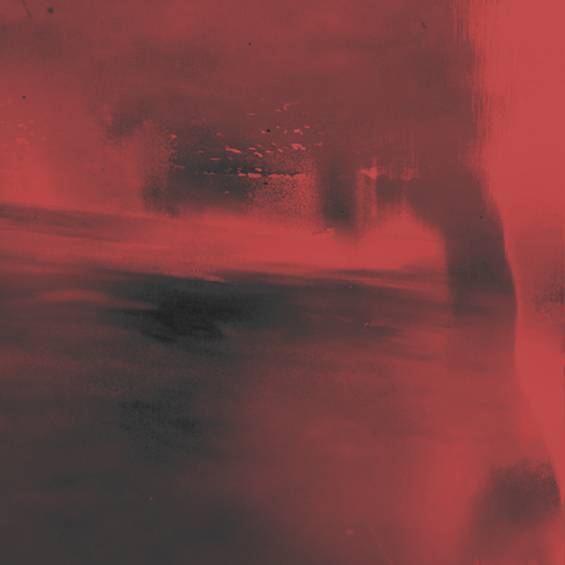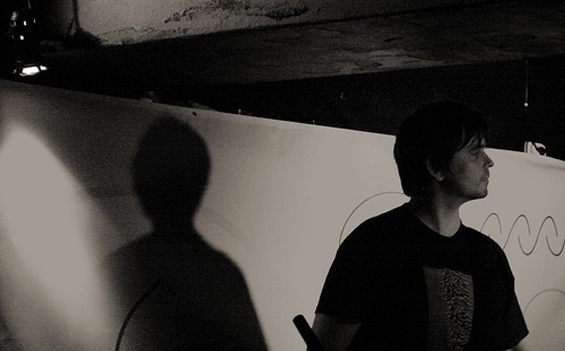

BACKTRACKING WITH SIMON SCOTT'S NAVIGARE
Electronic music fans of long-standing may have first become acquainted with Simon Scott as the drummer who played on the Slowdive releases Just for a Day, Souvlaki, and the 5 EP. But the man has hardly been idle since those days: he currently operates the KESH recording label, partners with Isan's Antony Ryan in Seavault, and collaborates with the likes of The Sight Below (and will appear on the outfit's second album in 2010), Machinefabriek, and Jasper TX. He also creates his own music, and there's no better example of it than his debut fill-length Navigare, which has just been released on Erik Skodvin's esteemed Miasmah imprint and features contributions from Jasper TX, Moskitoo, and Rafael Anton Irisarri. textura is honoured that Scott generously consented to offer track-by-track insight into the ideas behind the album's compositions and the production approaches he brought to the recording.
1. “Intro of Cambridge”:
Cambridge, located in the East of England, is the city where I was born on March 3rd back in the early-1970s at 3am during a snowstorm. The guitar textures for this track were recorded and manipulated during daily trips around Cambridge in the mild warmth and high pollen count of the summer of 2008. It's odd as I spend all of winter in the dark wishing it was spring and summer, but when it hits I get hay fever and spend months on antihistamine, sneezing and falling asleep in my Leffe. The city's timeless atmosphere and the manicured lawns of the universities seeped into the track as I listened to countless mixes of guitar transformations. After twelve years of living down in London, really miserable years I have to admit, to return here was like a weight lifting. You can hear the anticipation of brighter days as I returned home from living in London. This is the first track I wrote after Miasmah wrote to say they wanted to release my music.
2. “Under Crumbling Skies”:
It demanded that it be close to the beginning of the album as to me it evokes a vessel leaving the shore and sailing into the unknown. The field recordings of sails and the thunderstorm are deliberately evocative, and the album mood changes to a darker atmosphere. It is akin to the sun going behind the clouds, but towards the end of the track I feel the mood unexpectedly returns to sunnier waters. The death from alcohol abuse of my uncle (my mother's brother), who was a submarine officer in the Navy, made me curious about being submerged underwater for most of your life. The effects on your mental health and pressures of being away from home for so long can lead someone to drink themselves to death. The whole album has a theme of being taken away, hopefully to somewhere better, by whatever means—music, travel, drink, etc. The electronics are mostly subtle, as is the way with this album, but I would classify it as an electronic album.
3. “Flood Inn”:
It has an element of building fear and danger to it, and after the oceanic feel of the previous track this one feels claustrophobic and anxious. It is also the oldest track I wrote for the album and the first with drums that propel you into what feels like a burning ship with no way of escaping. This track feels like it could almost burst or catch alight by the end, and has tape hiss and percussive loops that bar by bar get dirtier and nastier. Flood Inn refers to the drinking element of losing your mental clarity whilst under the influence of drink and could be the name of a public house too.
4. “Derelict Days”:
I have been lucky enough to work with some amazing musicians, release some good records and tour, but when you find yourself alone at home and back to square one your days feel empty. I wrote this song as I really needed to let out my frustrations of feeling that I had wasted my time chasing someone else's vision. I fed some instruments and vocals through my mobile phone to create a distant layer of sound that permeates the song. The distant drums I love adding to disturb the ambience as it gives the track deeper dimension despite being mixed way down in the track. It most definitely is a come-down track full of longing and shadows with that misery of life you get when you wake up, go to the same place and say the same things to the same people, and hate every second of it.
5. “Repulse”:
The name of the submarine my uncle spent months under the sea in away from everyone he loved. I was watching loads of intense movies whilst writing this song and the image of the burnt character behind the deli in Lynch's Mulholland Drive was a big influence when recording this. It's the shortest track on the album but very intense and the darkest in mood for sure.

6. “The ACC”:
The most upbeat track on the album and probably one of the most electronic as it features loads of software manipulation, yet oddly it sounds the most like a band playing. You could call this tune “dream pop” or even “shoegaze” with a chorus you can almost sing along to and some spiced-up samples of me tearing around my drum kit.
7. “The Old Jug And Drum”:
In England some of our public houses have awesome names and The Old Jug and the North Star sound like song titles to me. The track is about a battle at sea and the journey into the violence, the conflict, and then the aftermath. It has an ambient texture that builds (with the help of Jasper TX), anticipating the oncoming violence that leads into a chaotic wall of sound. My detuned drum kit, software manipulation, sampled cutlery, and broken musical machinery enhances the transformation of mood. I also threw vocal samples into the mix as I felt that there was some anger in this track that I wanted to verbalize with the human voice.
8. “Ashma”:
Have you ever gone out at night so tired that every shadow feels like it wants to steal your soul? I sometimes wake up in the middle of the night and write music if I can't sleep and usually it shows. You can feel it was created at 4am when the world is dead silent. Again I have hidden the drums so they are almost unnoticeable and the odd time signature exaggerates the mood of unease. A lot of vocals on the album are mixed way down too so you create a tone rather than a melody. I have submerged many instruments (which renders them ambiguous) including cello, sitar, violin, harmonica, piano, and manipulated field recordings, and in this track I use an electric shaver on my guitar. The blending of my sounds evokes emotions and memories that are hard to identify and locate even if they sound familiar or identifiable. If I could pay for people to sit in a dark room with no outside distractions to hear my album I would as we rarely fully focus on the music we hear. However, I find it fascinating that a listener's environment will alter the effects of my recorded sounds so that he/she experiences a truly unique listening experience that differs from mine completely.
9. “Spring Stars”:
I wrote the original musical parts as a song about playing live under the stars in different countries but noticing that the stars all looked the same wherever you were. The fact that Rafael Anton Irisarri added his parts on the other side of the world in Seattle is apt. I guess I was daydreaming that perhaps one day I would get invited to foreign countries to play my music. I really like the fact that the rhythm is unsteady leaving you to navigate your way through the density of the track. The slide guitar carries the melody and the voices give these textures a human feel that is organic among the digital sounds.
10. “The Night And The Artificial Light” (CD) / “Dissolving Memories ” (LP):
That orange glow you get when the street lights obscure the stars at night and confusion of time was the theme behind this track. This was the last track to be written for this album, and was composed during a heavy snowstorm in February that added to the obscuring of the sky. It is the most digitally processed track written around the vocals of Moskitoo with some hidden melodies from me. A good closer for the CD, I feel, as to me it is very digital with an end-of-the-day atmosphere. The vinyl's “Dissolving Memories” features a sitar-and-keys drone and vocal loops that build over a growing rhythm. Somehow I always think of warm weather with this track, and I love improvising it live but it didn't fit on the CD so it is a vinyl-only inclusion. Again I hid melodies, which draws the listener in closer, something I love about writing music and organizing my sounds.
(Navigare, meaning “to set sail” in Latin, was written, processed, and produced between June 2008 and spring 2009 in Cambridge, UK.)

November 2009![]()